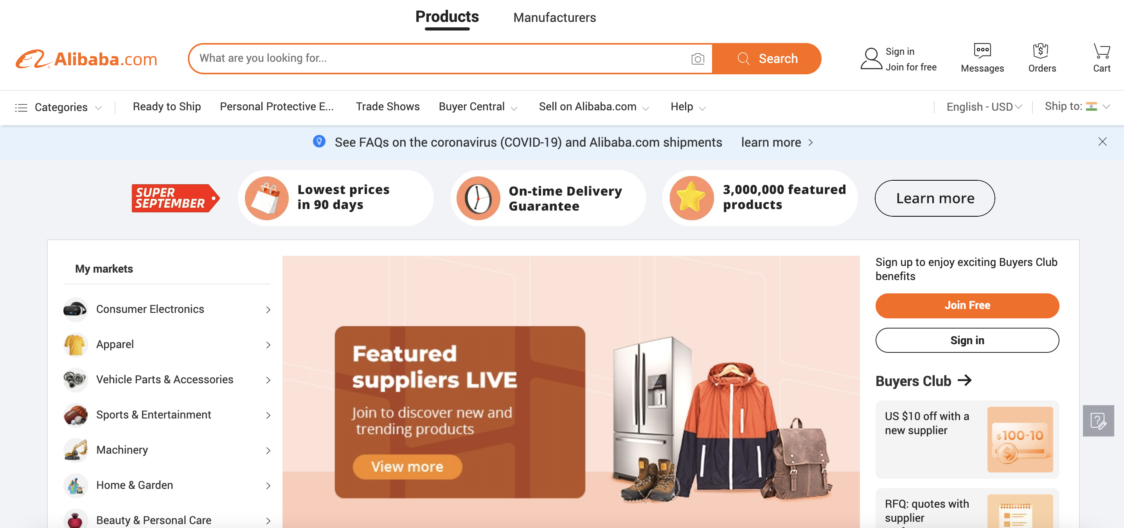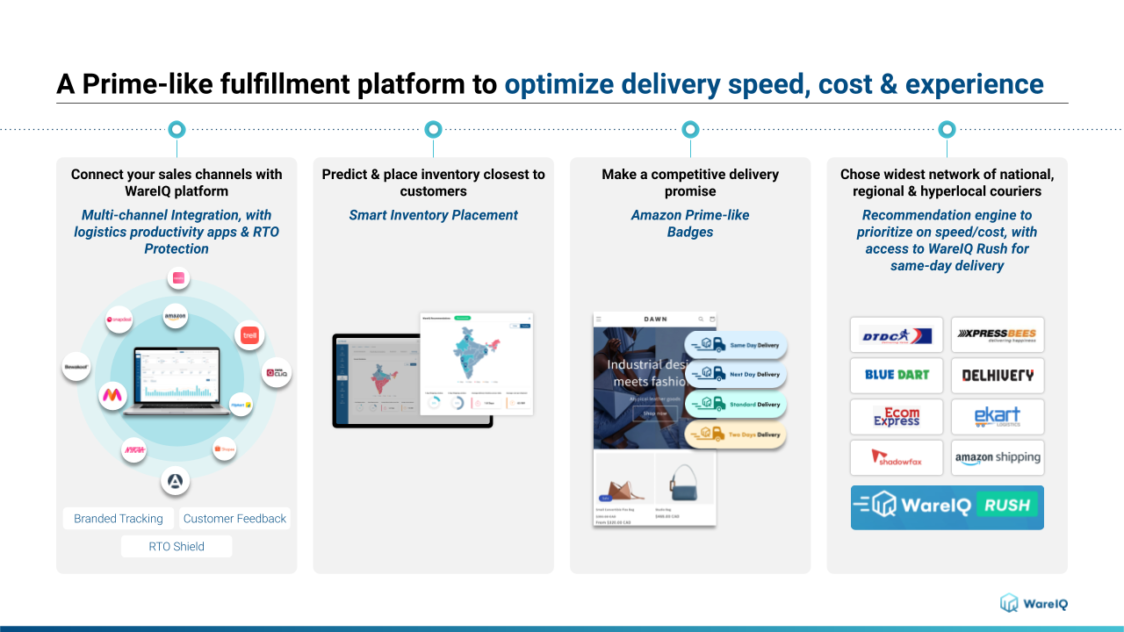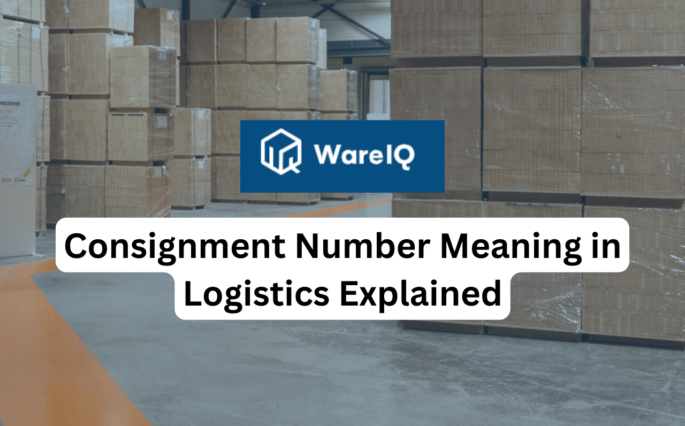Product Sourcing 101: A Definitive Guide on How to Source Products for Your eCommerce Business in 2025

A successful business is defined by the quality of its products and its ability to provide value to the lives of its customers. The lifetime of inventory monitoring begins with product sourcing and continues through various business operations and into the hands of purchasers. Product sourcing is the process of locating a credible and dependable product source in order to obtain high-quality products at a reasonable price.
It is essentially the process of completing research, computations, and negotiations to locate the best possible supplier. This entails hunting for high-quality products at affordable prices with a high margin of profit. Businesses can undercut competitors’ sales of similar or identical goods while still generating a profit by experimenting with different eCommerce product sourcing tactics and procuring inventory at lower prices.
What is Product Sourcing?
Product sourcing is the process of identifying good-quality products to sell at reasonable costs from recognized and reliable sources. There are several parts to the eCommerce product sourcing procedure, including studying the selected items, choosing the price and cost of the product, and negotiating with suppliers to get the greatest offer. Ultimately, the goal of eCommerce product sourcing is to find the best items from reputable suppliers at acceptable rates that allow for a significant profit margin.
Product sourcing for eCommerce may appear simple but it may need filtering through a maze of untrustworthy vendors, hidden fees, and occasionally misrepresented or low-quality products. In order to gain a competitive advantage, it is critical to identify proper product sourcing tactics in order to increase your potential profits from every transaction. Reaching out to a product sourcing agent is one approach to speed up the process by leveraging their knowledge of numerous vendors and niches.
WareIQ, an eCommerce fulfillment company, empowers online brands with a superior-tech platform to compete with Amazon like service levels by bringing their average delivery timelines from 5-10 days to 1-2 days.
8 Types of Product Sourcing in eCommerce
There are different product sourcing techniques to choose from, as well as a range of criteria to consider while making a decision. Businesses should not be hesitant to try more than one way to find the optimal path for their specific business model.
Wholesalers
Using wholesale is a beneficial product sourcing approach for organizations that do not want to manufacture the products themselves and it allows enterprises to simply scale up or down based on demand. However, the wholesale supplier technique expects you to buy in bulk, which means a higher upfront cost. Furthermore, because shops in various businesses widely use it, the products purchased are likely to be identical to competitors’ items.
Related Article: What is Wholesale eCommerce?
Manufacturers
This is useful for eCommerce retailers and online stores since it eliminates the need for middlemen and allows for direct contact between the business and the manufacturers. Although this is frequently less expensive than wholesale choices, it still requires a minimum order size, making it challenging for small enterprises. Alibaba and IndiaMart are a few such platforms.

Dropshipping
Companies that use dropshipping strategy will never come into contact with the merchandise. Businesses will no longer have to bother about packaging, shipping, or storage if they specify the things they intend to purchase from the supplier and have the supplier ship them directly to the consumer when they place an order. Seasonsway, IndiaMart, and Baapstore are a few examples. You can know more about peak season shipping here.
Existing Marketplaces
It is feasible, depending on the desired products, to purchase inventory from other merchants and then mark up the prices to earn a profit. While this is uncommon because it might raise product prices, it does provide firms with market research knowledge into the popularity of specific items and price points. Etsy, eBay, AliExpress are a few good examples.
Trade Shows
The goal of these events is to bring merchants and suppliers together. Trade events, exhibitions and conferences are excellent places to scout for new and upcoming items. Their relevance, however, would be determined by your company’s industry and location.
Product Sourcing Companies
Hiring a third party to find the greatest products at the best price on your behalf can be an intelligent decision for some retailers. Businesses that opt for this path, however, must consider recruiting costs as well as the legitimacy of these enterprises before proceeding.
Sourcing Platforms
With the increasing popularity of online businesses, it should be no surprise that online platforms are dedicated solely to marketplace B2B retail product procurement. Online marketplaces bring suppliers and merchants together and can be handy for comparing items and prices. It is vital to remember, however, that these sites are equally easily available to competitors.
Directories
Directories, like sourcing platforms, are lists of potential providers. Unlike an online marketplace, however, it does not provide research information about these vendors, forcing businesses to conduct their own research and contact the providers directly.
4 Product Sourcing Tips to Keep in Mind
When it comes to eCommerce product sourcing, there are a few aspects that your management should keep in mind to guarantee that the company selects the most profitable suppliers. Consider the following four suggestions to help you make a more informed decision:
Remember That Product Sourcing is Constant
Even when things are going well, the demand for eCommerce product sourcing is as great as it has ever been. It is critical to remember that even if products are selling swiftly, the replenishment of these items should be smooth. To clients, the supply of products should appear to be infinite in order to meet demand. Waiting until the sales percentage has reduced before resuming the product procurement process is a common mistake that should be avoided.
Conduct Market Research
Market research is critical and cannot be understated. Consider the product’s customer demand, target demographic, and durability. Is it a long-lasting item or something that people are likely to acquire on a regular basis? When performing market research, keep the intended pricing in mind and work as closely as possible within that budget to achieve efficient product sourcing for your products.
Utilize a Proven Strategy
When sourcing products for eCommerce, employ a well-known and widely used strategy. Investigate existing sourcing methods for certain types of goods and consider adopting these strategies because they have been tried and tested. Identify which product category your products fall in and select the strategy that would be best suited for it.
Choose Local Manufacturers
Although this is not always the case, as a general rule, the closer you are to the manufacturer, the better. When sourcing products from other countries, profit margins are typically lower. It is critical to consider which strategy will best meet the needs of the firm such as whether a small bundle or a bulk purchase from manufacturers is feasible. Keep in mind that purchasing in bulk saves money because it is less expensive for manufacturers to make and sell huge quantities of the goods. However, it may result in higher inventory holding costs and personnel costs.
Related read – Sourcing vs Procurement
How to Source Products for Your Online Store in 2025?
When it comes to product procurement, there are several strategies to consider. We’ll walk you through our top ten product sourcing tactics that can help your company thrive in 2025:
Always Look for Sourcing Opportunities
While sales may be good and you may believe you have found the perfect product source, it is critical to continuously be on the lookout for other sourcing methods and seek “the next big thing”. Any firm can suffer if it becomes complacent (just think about Blockbuster, for example, which refused to adapt to the world of digital content and online streaming). You can stay relevant to consumers and remain profitable by continuing to look for new items and market trends.
Conduct Market and Product Research
You may believe you have a fantastic product idea but the market may not agree. As a result, you’ll need to undertake some market research to understand what your clients are interested in (this can easily be done through consumer surveys). Also, don’t just start selling a product due to huge profit margins; those margins won’t matter if no one buys them. On the other hand, if you can’t find a popular product with a reasonable profit margin, it might not be worth your time and effort. Finally, make certain that the products fit inside your product portfolio. Unrelated products compared to the rest of your offerings are likely to confuse your customers.
Replicate Strategies That are Successful
When it comes to product procurement, there is no shame in replicating the business models of other successful vendors in order to be successful yourself. So, go ahead and place an order with one of your competitors or from the same vendor that they use. By inspecting the packaging, you should be able to determine who sourced the product. If you like what you see (packing, insulation, shipping time, etc.), maybe that company is a good fit for you as well.
Take the Lead
On the other hand, sometimes the market for a specific product is oversaturated and getting on board may not be in your best interests. After all, you don’t want to be burdened with a lot of unsold inventory. After completing some research and consulting with suppliers, it may be best to strike out on your own and set your own product trends in some circumstances so that you can also have a first-movers advantage that other companies may follow in the future.
Get Real-World Insights Offline
Why would an online retailer go offline? To conduct some field study! By attending trade events, you may be able to uncover a wonderful product supplier. You can also meet product manufacturers and developers in person at these events, building a genuine one-on-one relationship that could continue for years. This may enable you to be more successful than using conventional methods of product sourcing for eCommerce.
Use Local Vendors
Many eCommerce vendors will go to China for manufacturing assistance in order to enhance profit margins. However, it may be to your best advantage to keep product sourcing and manufacturing as near home as possible. You will not only have the assurance that the product is regulated by the Indian government, but you will also avoid language obstacles and other difficulties. A “Made in India” badge can also be a major selling point and product differentiator, depending on the target audience.
Cut Out Any Additional Middle Men
The more businesses in your supply chain, the greater the price of the goods. So, whenever feasible, buy straight from the manufacturer (or as close to directly from them as possible). This will keep costs down while increasing profit margins because there will not be a bunch of middlemen diluting your profits by claiming their share of it.
Opt for Bulk Purchasing
Buying in bulk will almost always result in a lower price but if the product is not a fast seller, you may be stuck with inventory for an extended period of time. Furthermore, if a newer model is released, your inventory may become basically obsolete. That loss might have a significant impact on your bottom line. A competent warehouse management system (WMS) can assist you in determining when to buy and when to hold back, allowing your company to run more efficiently.
Know Your Supplier
A supplier should be considered a partner; after all, you’re both in this to make a profit. As a result, you’ll want to cultivate your supplier relationship so that you’re first on their call list when they have a hot new product and first in line when you’ve discovered a product default and need it remedied. A competent supplier will also offer you all of the information you need to create extensive product descriptions, videos, FAQs, and buying guides (particularly if you’re selling a complex product). All of this information is incredibly useful to purchasers and could be the difference between a sale and losing a customer to the competition.
Have an Alternate Plan
Having a backup source is a wise option and it does not always suggest that you do not trust your primary supply. What if your principal supplier suffers a disaster, such as a data breach, a severe storm or a product recall? This has the potential to completely disrupt your supply chain via no fault of your own. Another possibility is that there is a change in ownership or management and your supplier suddenly requests significantly more money. Your operation can continue without a hitch if you have a backup plan.
Conclusion
We have charted the process of product sourcing and set out the important ingredients you need to achieve one successful goal: finding good products from good suppliers, at prices that give you a good profit margin. We’ve talked a lot about building relationships with product sourcing agents if that’s an option for your eCommerce business, laid out product sourcing strategies that you can use to further your experience and research, and given you tips on how to keep improving and refining your strategy. If you need assistance with storing your sourced products or any other eCommerce requirement, WareIQ can be of help.

WareIQ is one of India’s leading eCommerce fulfillment companies. We offer a wide range of eCommerce solutions such as a nationwide network of fulfillment centers with smart inventory placement to store products closer to your customers, a partnership with more than 20 shipping companies to always provide the quickest and most cost-effective option, a custom WMS that can monitor your inventory levels and automatically place replenishment orders and much more.









